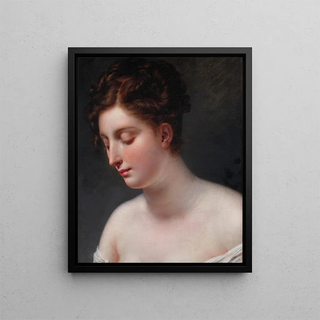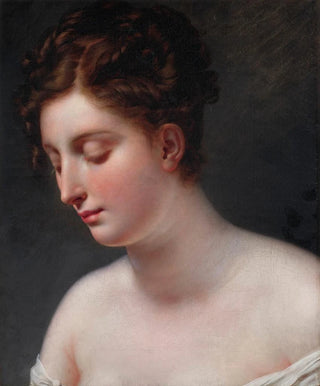Art print | Galatée - Anne-Louis Girodet-Trioson


View from behind

Frame (optional)
Galatée Art print - Anne-Louis Girodet-Trioson – Captivating Introduction
In the vibrant universe of art history, certain works transcend time and become etched in collective memory. "Galatée" by Anne-Louis Girodet-Trioson is one of those. Painted in the early 19th century, this canvas evokes not only beauty and grace but also a rich and complex mythology, echoing the aesthetic aspirations of its era. The depiction of Galatée, a sea nymph, surrounded by her admirers, immerses us in a world of sensuality and dreams. The piece, through its meticulous details and shimmering colors, invites the viewer to explore a narrative where love and beauty intertwine delicately and enchantingly.
Style and uniqueness of the work
Girodet's style stands out for impressive technical mastery, blending classicism and romanticism. In "Galatée," the contours of the figures are rendered with surgical precision, while the flowing drapery adds an almost lifelike dimension to the composition. Light plays a crucial role, illuminating the faces with a softness that seems almost supernatural. Pastel shades, particularly the nuances of blue and pink, create a dreamlike atmosphere, evoking the sea and sky. Galatée's pose, both majestic and vulnerable, captures the very essence of ideal beauty. Ornamental details, such as shells and flowers, enrich the scene, making each viewing a new discovery. It is this harmony between technique and emotion that makes "Galatée" a masterpiece of artistic heritage.
The artist and his influence
Anne-Louis Girodet-Trioson, a student of Jacques-Louis David, established himself in the artistic landscape of the early 19th century. His work, although often associated with the classical tradition, stands out for a romantic sensitivity that foreshadows upcoming artistic movements. Girodet, by exploring mythological and historical themes, paved the way for a new way of interpreting the human figure and emotion. "Galatée" is emblematic of this evolution, where the artist does not merely reproduce forms,

Matte finish

View from behind

Frame (optional)
Galatée Art print - Anne-Louis Girodet-Trioson – Captivating Introduction
In the vibrant universe of art history, certain works transcend time and become etched in collective memory. "Galatée" by Anne-Louis Girodet-Trioson is one of those. Painted in the early 19th century, this canvas evokes not only beauty and grace but also a rich and complex mythology, echoing the aesthetic aspirations of its era. The depiction of Galatée, a sea nymph, surrounded by her admirers, immerses us in a world of sensuality and dreams. The piece, through its meticulous details and shimmering colors, invites the viewer to explore a narrative where love and beauty intertwine delicately and enchantingly.
Style and uniqueness of the work
Girodet's style stands out for impressive technical mastery, blending classicism and romanticism. In "Galatée," the contours of the figures are rendered with surgical precision, while the flowing drapery adds an almost lifelike dimension to the composition. Light plays a crucial role, illuminating the faces with a softness that seems almost supernatural. Pastel shades, particularly the nuances of blue and pink, create a dreamlike atmosphere, evoking the sea and sky. Galatée's pose, both majestic and vulnerable, captures the very essence of ideal beauty. Ornamental details, such as shells and flowers, enrich the scene, making each viewing a new discovery. It is this harmony between technique and emotion that makes "Galatée" a masterpiece of artistic heritage.
The artist and his influence
Anne-Louis Girodet-Trioson, a student of Jacques-Louis David, established himself in the artistic landscape of the early 19th century. His work, although often associated with the classical tradition, stands out for a romantic sensitivity that foreshadows upcoming artistic movements. Girodet, by exploring mythological and historical themes, paved the way for a new way of interpreting the human figure and emotion. "Galatée" is emblematic of this evolution, where the artist does not merely reproduce forms,






